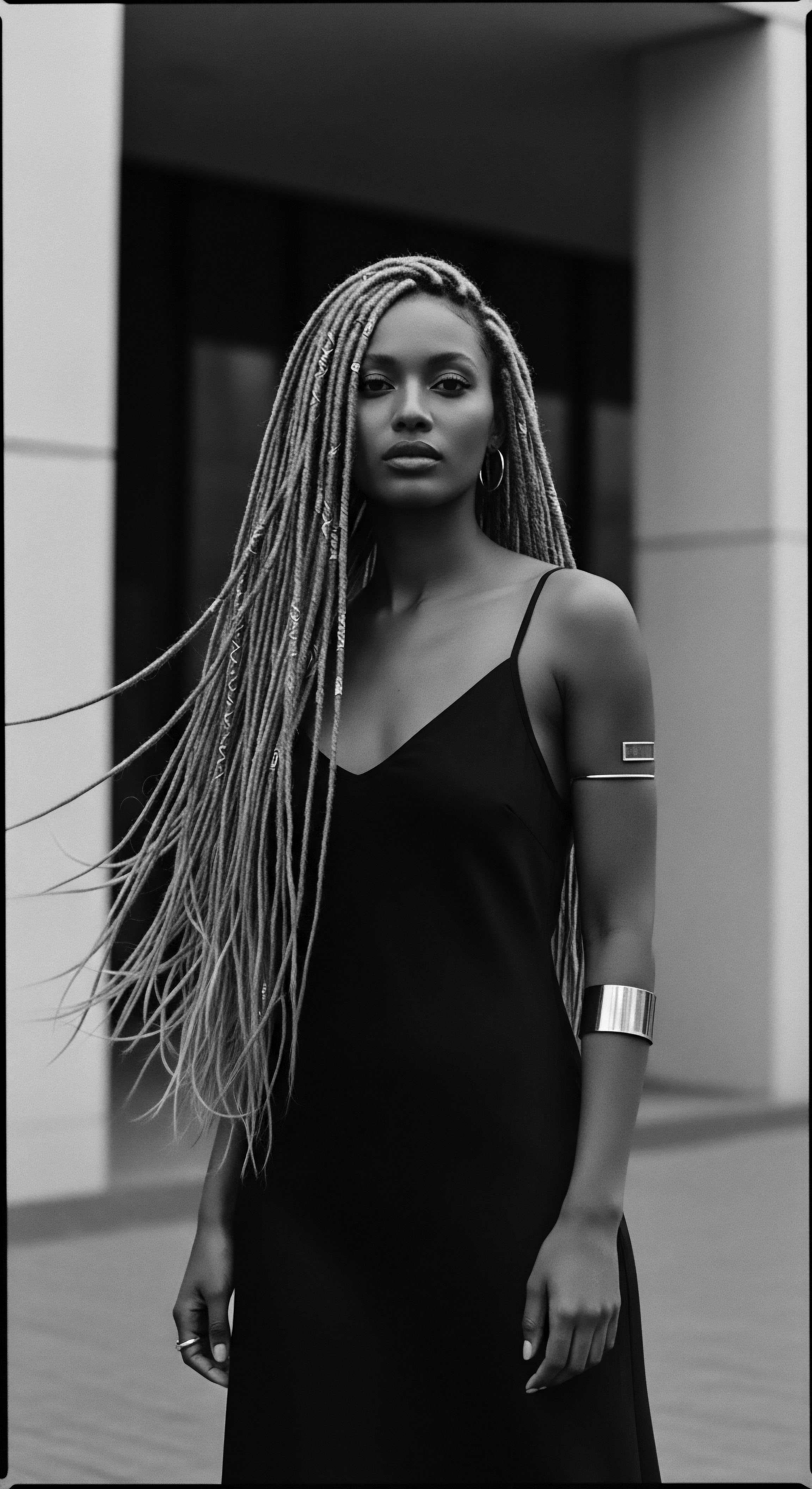
How do plant uses moisturize textured hair?
Plant uses moisturize textured hair by providing natural lipids and humectants, a heritage-rich practice passed through generations.

How did enslaved communities care for their textured hair with plants?
Enslaved communities used local plants like castor bean, slippery elm, and sassafras for textured hair care, preserving vital heritage.

What plants aid textured hair health?
Plants like shea, hibiscus, and fenugreek have been used for generations to support textured hair health, carrying profound heritage and cultural significance.

What historical plant uses shield textured hair from harm?
Historical plant uses, rooted in ancestral wisdom, shielded textured hair by providing emollients, protective barriers, and vital nutrients.

What plants nourished textured hair in ancient West Africa?
Ancient West Africa used plant-based ingredients like shea butter, baobab oil, and neem to moisturize, protect, and fortify textured hair, linking ancestral wisdom to contemporary care.

What plant-based methods are tied to textured hair heritage?
Plant-based methods are deeply tied to textured hair heritage through centuries of ancestral wisdom and cultural practices.

What are the historical benefits of plant-based hair cleansing for textured hair?
Plant-based hair cleansing historically nourished textured hair by providing gentle, non-stripping cleaning that respected its unique structure and preserved ancestral moisture.

How do traditional plant applications enhance moisture retention in textured hair?
Traditional plant applications enhance textured hair moisture by sealing the cuticle and attracting water, honoring ancestral heritage.

How did historical plant use support textured hair manipulation?
Historical plant use supported textured hair manipulation through a heritage of botanical understanding, providing moisture, slip, and strength.

How did ancient plant rituals benefit textured hair?
Ancient plant rituals nourished textured hair through moisture, strength, and scalp health, directly benefiting its heritage and unique structure.

What plant-based solutions sustained textured hair throughout history?
Plant-based solutions like shea, coconut, and castor oils, along with various herbal extracts, historically sustained textured hair, preserving its heritage.

How do plants support hair health?
Plants support textured hair health by providing natural nutrients and protective compounds, deeply rooted in ancestral care practices and heritage.

In what ways did African diaspora communities preserve hair care heritage through plants?
African diaspora communities preserved textured hair heritage through plant-based remedies, embodying ancestral wisdom and resilience.

How does plant-based hair care embody resilience for Black cultural identity?
Plant-based hair care embodies Black cultural identity's resilience by continuing ancestral traditions of care, preserving heritage, and affirming selfhood.

How did plant knowledge affect ancient hair styling?
Ancient societies used plant knowledge to moisturize, strengthen, and style textured hair, guiding ancestral care traditions.

How did ancient communities use plants for hair strength?
Ancient communities strengthened hair using diverse plant-based concoctions and rituals, deeply rooted in textured hair heritage.

What traditional hair care rituals incorporated plants for textured hair?
Traditional hair care for textured hair often involved plants like shea butter, amla, and chebe powder for cleansing, moisturizing, and strengthening, deeply rooted in heritage.

What historical significance do plant-based hair care rituals hold for textured hair heritage?
Plant-based hair care rituals signify a deep heritage of identity, resilience, and ancestral botanical wisdom for textured hair.

What historical examples illuminate traditional plant use for textured hair health?
Traditional plant use for textured hair health, deeply rooted in heritage, showcases ancestral wisdom in nurturing curls and coils.

What specific plant ingredients nourished textured hair across African diaspora?
Ancestral plant ingredients like shea butter, argan oil, and chebe powder deeply nourished textured hair, embodying a rich diasporic heritage of care.

How did traditional plant ingredients support textured hair health through generations?
Traditional plant ingredients nourished textured hair through generations, preserving its health and serving as cultural touchstones.

What historical examples show the role of plants in textured hair heritage?
Plants served as fundamental agents for cleansing, conditioning, and styling textured hair, embodying a rich ancestral heritage of care.
